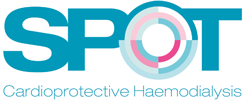Home / FlashMed
FlashMed
| Titolo | ASN 2005 - [PUB283] Clinical Hemodiafiltration (HDF) Trial Study in the United States. |
| Autore | Alice T. Morris, Fansan Zhu, Chung F. Tung, Peter Homel, Mary Carter, Allen M. Kaufman, Claudio Ronco, Martin Kuhlmann, Nathan W. Levin Nephrology, Renal Research Institute, New York, NY; Nephrology/Pain Medicine/Palliative Care, Beth Israel Medical Center, New York, NY; Nephrology, St. Bortolo Hospital, Vicenza, Italy |
| Referenza | ASN 2005 - 8.11.2005 - 13.11.2005 Philadelphia, Pennsylvania, USA |
| Contenuto | Hemodiafiltration (HDF) has been a standard therapy for many dialysis patients in Europe. Until now,however, has never formally been used in the US. The benefits of this therapy have been widely documented. Large volumes of substitution solution are needed to replace that loss by the patient during HDF therapy. Modern dialysis machine technology provides on-line production of this substitution solution through diffusion of dialysate. The aim of this study was to introduce this therapy to the US. 10 stable dialysis patients (5 males-mean age 5716.3 / 5 females mean age 63 17.2) were dialyzed for 3 consecutive treatments on both a 4008 H On-Line plus HDF machine (HDF) and 2008H machine (HD). 192.86 liters of ultra-pure substitution solution were infused pre-pump during HDF therapy. Dialyzers used for both therapies were Optiflux 180 NR dialyzer (9 patients) and Optiflux 200 NR dialyzer (1 patient). Standard monitoring of vital signs were obtained, which included pre/post weights, temperatures and blood pressures, intra-dialytic complications, substitution volume and patients subjective comments. Pre and post dialysis BUN/Creatinine levels were obtained. There were no significant differences in vital statistic between gender and therapies. There was a significant absolute value reduction in BUN (p < 0.002) with HDF therapy by repeated measurements ANOVA There was no significant absolute value reduction in creatinine levels. There was no significant difference seen in weight removal or pre/post oral temperatures between therapies. HDF therapy was tolerated well in this sample population and there were no unusual complaints experienced by the patients in either therapy. The significant absolute reduction in BUN levels indicates that this therapy is adequate for removal of toxins in this molecular weight class. This clinical trial demonstrates that HDF can safely and effectively be used as another choice of therapy for the dialysis patient. |
| Data | 20.12.2005 |
| Lista completa |
|







